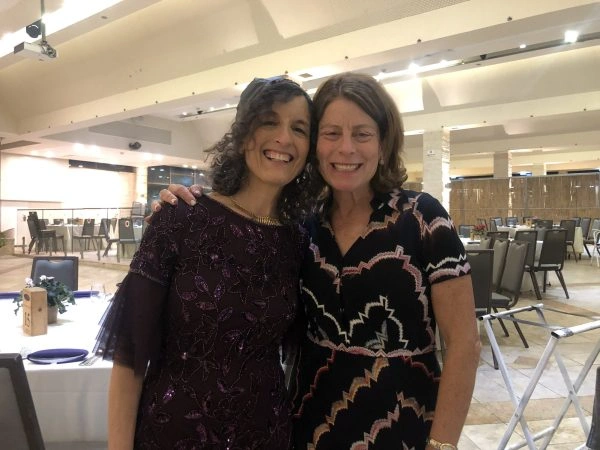Zevachim 3
Share this shiur:
Masechet Zevachim
Masechet Zevachim is sponsored by Esther Kremer in loving memory of her father, Manny Gross on his third yahrzeit. “He exemplified a path of holiness and purity, living with kedushah in his everyday life.”
Want to dedicate learning? Get started here:


Summary
Seder Kodashim Kit – Order Form
From where do we know for certain that a get that is written without any specific intent for the woman is disqualified (the basis of a contradiction in Zevachim 2)? After four failed attempts, they eventually find a fifth case in the Mishna in Gittin that clearly proves this.
Four contradictions are raised against statements brought in the name of Rav relating to cases in which sacrifices are/are not disqualified when offered for a similar but different intent or for a completely different intent. Comparisons are made to divorce documents, impurities in utensils (what things are considered a barrier that the impurity cannot pass through), and laws within the topic itself (various cases where wrong intentions disqualify/don’t disqualify the sacrifices). Each contradiction is resolved.
How do we know with certainty that a get (divorce document) written without specific intent for the woman is invalid? This question arises as part of a contradiction discussed in Zevachim 2. After four unsuccessful attempts to find the source, the Gemara ultimately finds a definitive proof in a Mishna in Gittin, which clearly establishes that a get must be written lishmah—with specific intent for the woman receiving it.
The sugya presents four challenges to statements attributed to Rav regarding when sacrificial offerings are disqualified due to improper intent. These challenges explore cases where the intent is slightly off (e.g., for a different type of offering) or entirely unrelated. The contradictions are from:
- The laws of gittin (divorce documents)
- The laws of tumah in utensils (what constitutes a barrier to impurity)
- Internal comparisons within the sacrificial laws themselves
Each contradiction is carefully analyzed and ultimately resolved, reinforcing the nuanced understanding of how intent affects the validity of offerings—and by extension, other halachic domains.
Today’s daily daf tools:
Masechet Zevachim
Masechet Zevachim is sponsored by Esther Kremer in loving memory of her father, Manny Gross on his third yahrzeit. “He exemplified a path of holiness and purity, living with kedushah in his everyday life.”
Today’s daf is sponsored by Lisa Malik & Adi Wyner in loving memory of Lisa’s grandmother, Regina Post z”l. “Babi Gina was the one who insisted on her grandchildren going to the Yeshivah Flatbush and who was especially proud of her 2 granddaughters who were Hebrew valedictorians. She would also be so proud to know that one of her namesakes, Rivkah Gottlieb, made aliyah and that she now has 6 Israeli grandchildren and 3 Israeli great-grandchildren. May the memory of Rivkah bat Shmuel v’Chavah be for a blessing.”
Today’s daily daf tools:
Delve Deeper
Broaden your understanding of the topics on this daf with classes and podcasts from top women Talmud scholars.
New to Talmud?
Check out our resources designed to help you navigate a page of Talmud – and study at the pace, level and style that fits you.
The Hadran Women’s Tapestry
Meet the diverse women learning Gemara at Hadran and hear their stories.
Zevachim 3
יָתֵר עַל כֵּן, כָּתַב לְגָרֵשׁ אֶת אִשְׁתּוֹ וְנִמְלַךְ, מְצָאוֹ בֶּן עִירוֹ וְאָמַר לוֹ: ״שְׁמִי כְּשִׁמְךָ וְשֵׁם אִשְׁתִּי כְּשֵׁם אִשְׁתְּךָ״ – פָּסוּל לְגָרֵשׁ בּוֹ.
Moreover, if a husband wrote a bill of divorce with which to divorce his wife but later reconsidered, and a resident of his town found him and said to him: My name is the same as your name, and my wife’s name is the same as your wife’s name, and we reside in the same town; give me the bill of divorce and I will use it, the bill of divorce is unfit for the second man to divorce his wife with it. Evidently, even if the bill of divorce was written to be used for divorce, if it was not written specifically for the given woman it is not valid.
דִּילְמָא שָׁאנֵי הָתָם, דְּאִינְּתִיק לֵיהּ לְשֵׁם גֵּירוּשִׁין דְּהָהוּא!
The Gemara responds: Perhaps there it is different, as the bill of divorce was specifically designated for the sake of that man’s divorce, and therefore it is not valid for the second man’s divorce. But a bill of divorce that was written without specification might be valid if written for the sake of divorce.
אֶלָּא מֵהָא: יָתֵר עַל כֵּן, יֵשׁ לוֹ שְׁתֵּי נָשִׁים שֶׁשְּׁמוֹתֵיהֶן שָׁווֹת – כָּתַב לְגָרֵשׁ אֶת הַגְּדוֹלָה, לֹא יְגָרֵשׁ בּוֹ אֶת הַקְּטַנָּה.
Rather, derive it from the subsequent clause in that mishna: Moreover, if he has two wives whose names are identical, and he wrote a bill of divorce to divorce the older one, and then reconsidered, he may not divorce the younger one with it. Evidently, a bill of divorce must be written specifically to divorce a specific wife.
דִּילְמָא שָׁאנֵי הָתָם, דְּאִינְּתִיק לֵיהּ לְשֵׁם גֵּירוּשִׁין דְּהָהִיא!
The Gemara responds: Perhaps there it is different, as the bill of divorce was specifically designated for the sake of the divorce of that other wife.
אֶלָּא מֵהָא: יָתֵר עַל כֵּן, אָמַר לְלַבְלָר: כְּתוֹב, וּלְאֵיזֶה שֶׁאֶרְצֶה אֲגָרֵשׁ – פָּסוּל לְגָרֵשׁ בּוֹ.
Rather, derive it from the subsequent clause in that mishna: Moreover, if he said to the scribe [lalavlar]: Write a bill of divorce for one of my two wives who have identical names, and I will use it to divorce whichever one of them that I want, this bill of divorce is unfit to divorce either wife with it. Evidently, it must be written for the divorce of a specific woman.
דִּילְמָא שָׁאנֵי הָתָם, דְּאֵין בְּרֵירָה!
The Gemara responds: Perhaps there it is different, as there is no retroactive designation. The designation of the bill of divorce cannot be determined retroactively. It cannot be used for either wife because it was possibly written for the sake of the other wife. But a bill of divorce written without specification may be valid.
אֶלָּא מֵהָא: הַכּוֹתֵב טוֹפְסֵי גִיטִּין – צָרִיךְ שֶׁיַּנִּיחַ מְקוֹם הָאִישׁ וּמְקוֹם הָאִשָּׁה וּמְקוֹם הָעֵדִים וּמְקוֹם הַזְּמַן. וְאָמַר רַב יְהוּדָה אָמַר שְׁמוּאֵל: אַף צָרִיךְ שֶׁיַּנִּיחַ מְקוֹם ״הֲרֵי אַתְּ מוּתֶּרֶת לְכׇל אָדָם״.
Rather, derive it from that mishna (Gittin 26a): With regard to a scribe who writes the standard part of [tofesei] bills of divorce in advance, so that when one requests a bill of divorce, he will have to add only the details unique to the case, he must leave empty the place of the name of the man, and the place of the name of the woman, and the place of the names of the witnesses, and the place of the date. And in addition, Rav Yehuda says that Shmuel says: A scribe must also leave the place of the essential phrase: You are hereby permitted to marry any man, since it must be written for the sake of that specific woman. Evidently, a bill of divorce must be written for a specific husband and wife, and if not it is not valid, even if it was written for the sake of divorce.
תּוּ רָמֵי מִילְּתָא אַחֲרִיתִי – מִי אָמַר רַב יְהוּדָה אָמַר רַב: חַטָּאת שֶׁשְּׁחָטָהּ לְשֵׁם עוֹלָה – פְּסוּלָה, שְׁחָטָהּ לְשֵׁם חוּלִּין – כְּשֵׁירָה; אַלְמָא דְּמִינַהּ מַחֲרִיב בַּהּ, דְּלָאו מִינַהּ לָא מַחֲרִיב בַּהּ?!
§ Ravina continued to inform Rav Pappa of Rava’s statements: Rava further raises another contradiction: Did Rav Yehuda say that Rav says that a sin offering that one slaughtered for the sake of a burnt offering is unfit, whereas if one slaughtered the animal for the sake of consumption of non-sacred meat, it is fit? Apparently, only improper intent that is of its type, i.e., for the sake of another offering, ruins the offering and renders it unfit, whereas wrong intent that is not of its type, i.e., for the sake of consumption of non-sacred meat, is disregarded and does not ruin it.
וּרְמִינְהוּ: כׇּל הַגֵּט שֶׁנִּכְתַּב שֶׁלֹּא לְשֵׁם אִשָּׁה – פָּסוּל. וַאֲפִילּוּ לְשֵׁם גּוֹיָה נָמֵי פָּסוּל!
And Rava raises a contradiction from the aforementioned mishna (Gittin 24a): Any bill of divorce that was written not for the sake of the woman who is being divorced with it is not valid; and by inference, even if it was written for the sake of a gentile woman, it is not valid. With regard to the matter of divorce, a gentile woman is not of the same type as a Jewish woman, as the halakhot of bills of divorce are irrelevant to her.
וְשַׁנִּי: גֵּט – דַּל גּוֹיָה מִינֵּיהּ הָוֵה לֵיהּ סְתָמָא, וּסְתָמָא פָּסוּל. קָדָשִׁים – דַּל חוּלִּין מִינַּיְיהוּ הָוֵה לֵיהּ סְתָמָא, וּסְתָמָא כְּשֵׁירִים.
And Rava resolves the contradiction: If a bill of divorce is written for the sake of a gentile woman it is not valid, because if you remove the intent for the sake of a gentile woman from it, it is considered to be without specification of the woman who is divorced with it, and a bill of divorce written without specification is not valid. But if sacrificial animals are slaughtered for the sake of consumption of non-sacred meat, they remain fit, since if you remove the non-sacred intent from them, they are considered to be without specification, and offerings slaughtered without specification are fit.
וּרְמָא מִילְּתָא אַחֲרִיתִי: מִי אָמַר רַב יְהוּדָה אָמַר רַב: חַטָּאת שֶׁשְּׁחָטָהּ לְשֵׁם עוֹלָה – פְּסוּלָה, שְׁחָטָהּ לְשֵׁם חוּלִּין – כְּשֵׁירָה; אַלְמָא דְּמִינַּהּ מַחֲרִיב בַּהּ, דְּלָא מִינַּהּ לָא מַחֲרִיב בַּהּ?!
§ And Rava raised another contradiction: Did Rav Yehuda say that Rav says that a sin offering that one slaughtered for the sake of a burnt offering is unfit, whereas if one slaughtered it for the sake of consumption of non-sacred meat it is fit? Apparently, he holds that only improper intent that is of its type ruins it, whereas wrong intent that is not of its type does not ruin it.
וְהָתַנְיָא: ״תּוֹכוֹ״ – וְלֹא תּוֹךְ תּוֹכוֹ, וַאֲפִילּוּ כְּלִי שֶׁטֶף מַצִּיל!
But isn’t it taught in a baraita: The Torah states with regard to ritually impure carcasses of creeping animals: “And every earthen vessel into whose interior any of them falls, anything that is in its interior shall be impure” (Leviticus 11:33). From the word “interior” it is derived that only food in its interior is rendered impure, but not any food that is in the interior of its interior, i.e., in another vessel within the earthenware vessel. And this is the halakha not only if the inner vessel is an earthenware vessel; even if it is a metal or wooden vessel, which is purified though rinsing in a ritual bath and is therefore susceptible to impurity from its exterior, it nevertheless protects food that is inside it from being rendered impure. Evidently, even a vessel that is not of the same type serves to nullify the status of the interior of an earthenware vessel.
וְשַׁנִּי: חוּלִּין אֵצֶל קָדָשִׁים – כִּמְחִיצָה אֵצֶל תַּנּוּר; מָה מְחִיצָה אֵצֶל תַּנּוּר לָא מַהְנְיָא לַהּ כְּלָל, אַף חוּלִּין אֵצֶל קֳדָשִׁים לָא מַהְנְיָא לֵיהּ כְּלָל.
And Rava resolves the contradiction as follows: A vessel purified through rinsing is actually considered of the same type as an earthenware vessel, since they are both vessels. Concerning the halakhot of impurity, the equivalent of intent with regard to the consumption of non-sacred meat is an item that is not a vessel at all; the Sages rendered non-sacred meat with regard to sacrificial animals like a partition with regard to an earthenware oven: Just as a partition in an oven is not effective at all in preventing the transmission of impurity from one side to the other since it is not a vessel, so too, slaughtering an offering for the consumption of non-sacred meat is not effective at all with regard to rendering sacrificial animals unfit.
דִּתְנַן: תַּנּוּר שֶׁחֲצָצוֹ בִּנְסָרִים אוֹ בִּירִיעוֹת, וְנִמְצָא שֶׁרֶץ בְּמָקוֹם אֶחָד – הַכֹּל טָמֵא.
This is as we learned in a mishna (Kelim 8:1): In the case of an oven that one divided with boards or with curtains, and the carcass of a creeping animal was found in one place, all of the food in the oven, including that on the other side of the partition, is rendered impure.
כַּוֶּורֶת שֶׁהִיא פְּחוּתָה וּפְקוּקָה בְּקַשׁ, וּמְשׁוּלְשֶׁלֶת לַאֲוִיר הַתַּנּוּר – שֶׁרֶץ בְּתוֹכָהּ, הַתַּנּוּר טָמֵא; שֶׁרֶץ בַּתַּנּוּר, אֳוכָלִין שֶׁבְּתוֹכָהּ טְמֵאִין. וְרַבִּי אֱלִיעֶזֶר מְטַהֵר.
The mishna continues: In the case of a round barrel that is broken and plugged up with straw and lowered into the airspace of the oven, if the carcass of a creeping animal is inside the barrel, the oven is rendered impure. And if the carcass of a creeping animal is in the oven, the food that is inside the barrel is rendered impure. The broken barrel is not considered a vessel despite its being plugged up with straw, and therefore it does not prevent the transmission of impurity between the creeping animal and the oven. And Rabbi Eliezer deems the food in the barrel pure.
אָמַר רַבִּי אֱלִיעֶזֶר: קַל וָחוֹמֶר! אִם הִצִּיל בְּמֵת – הֶחָמוּר, לֹא תַּצִּיל בִּכְלִי חֶרֶס – הַקַּל?!
The mishna continues: Rabbi Eliezer said: My opinion can be inferred a fortiori: If a barrel or any other partition between some item and a corpse under the same roof protects the item from becoming impure, even though impurity imparted by a corpse is severe in that it lasts seven days, shouldn’t a partition protect food in the airspace of an earthenware vessel from impurity imparted by the carcass of a creeping animal, which is mild by comparison?
אָמְרוּ לוֹ: לֹא;
The mishna continues: The Rabbis said to him: Your inference is not correct.
אִם הִצִּיל בְּמֵת חָמוּר – שֶׁכֵּן חֲלוּקָה בְּאוֹהָלִין, תַּצִּיל בִּכְלִי חֶרֶשׂ הַקַּל – שֶׁאֵין חֲלוּקִין בְּאוֹהָלִין.
If a partition protects an item from impurity imparted by a corpse, which is severe, this is only because such impurity is unique in that it is imparted to that which is in the same tent, i.e., under the same roof, and tents are divided by partitions. If so, should a partition protect food from impurity imparted in an earthenware vessel, which, although mild, is not divided by partitions, like tents are?
הָתִינַח לְרַבָּנַן; לְרַבִּי אֱלִיעֶזֶר מַאי אִיכָּא לְמֵימַר?
The Gemara notes: The comparison between non-sacred meat vis-à-vis offerings and a partition in an earthenware vessel works out well according to the opinion of the Rabbis, who hold that a partition does not prevent transmission of impurity inside an earthenware vessel. But according to the opinion of Rabbi Eliezer, who maintains that a partition is effective in an earthenware oven, what can be said? How is this compatible with the principle that an item is not affected by something not of its type?
רַבִּי אֱלִיעֶזֶר קַל וָחוֹמֶר קָאָמַר.
The Gemara responds: Rabbi Eliezer agrees with this principle. Yet he says that a partition in an earthenware vessel is effective due to his a fortiori inference, which overrides the principle that an item is not affected by something not of its type.
אִי הָכִי, הָתָם נָמֵי לֵימָא קַל וָחוֹמֶר: קֳדָשִׁים מְחַלְּלִין קֳדָשִׁים – חוּלִּין לֹא כׇּל שֶׁכֵּן?!
The Gemara challenges: If that is so, that an a fortiori inference overrides this principle, let us say an a fortiori inference there as well, with regard to a sin offering that was slaughtered for the consumption of non-sacred meat: If slaughtering sacrificial animals for the sake of other sacrificial animals desecrates those sacrificial animals, all the more so is it not clear that slaughtering them for the consumption of non-sacred meat desecrates them?
אֶלָּא טַעְמָא דְּרַב – כְּרַבִּי אֶלְעָזָר; דְּאָמַר רַבִּי אֶלְעָזָר: מַאי טַעְמָא דְּרַב? ״וְלֹא יְחַלְּלוּ אֶת קׇדְשֵׁי בְּנֵי יִשְׂרָאֵל אֵת אֲשֶׁר יָרִימוּ לַה׳״ – קֳדָשִׁים מְחַלְּלִין קֳדָשִׁים, וְאֵין חוּלִּין מְחַלְּלִין קֳדָשִׁים.
The Gemara responds: Rather, the reasoning behind the statement of Rav that a sin offering slaughtered for the consumption of non-sacred meat is fit is not in accordance with this principle at all, but it is in accordance with the opinion of Rabbi Elazar. As Rabbi Elazar says: What is the reasoning behind the statement of Rav? The verse: “And they shall not desecrate the sacred items of the children of Israel, which they set apart unto the Lord” (Leviticus 22:15), teaches that only improper intentions for the sake of sacred items, i.e., offerings, desecrate sacred items, but non-sacred intent does not desecrate sacred items.
אַלְמָא אֲתָא קְרָא אַפְּקֵיהּ מִקַּל וָחוֹמֶר; הָכָא נָמֵי – לֵיתֵי ״תּוֹכוֹ״ לַפְּקֵיהּ מִקַּל וָחוֹמֶר!
The Gemara notes: Apparently, an inference from a verse can come to rule out a conflicting a fortiori inference. If so, here too, with regard to a partition in an oven, let the verse “and every earthen vessel into whose interior any of them falls” come to rule out Rabbi Eliezer’s a fortiori inference that a partition prevents food in an oven from becoming impure.
הַאי ״תּוֹכוֹ״ – מִיבְּעֵי לֵיהּ לָאֳוכָלִין שֶׁגִּיבְּלָן בְּטִיט, וְהִכְנִיסָן לַאֲוִיר תַּנּוּר. סָלְקָא דַּעְתָּךְ אָמֵינָא: הוֹאִיל וּבִנְגִיעָה לֹא מְטַמֵּא, בַּאֲוִירוֹ נָמֵי לָא מְטַמּוּ [קָא מַשְׁמַע לַן].
The Gemara responds: This expression: “Whose interior,” does not indicate that a partition is ineffective, as it is necessary to teach another halakha, namely, that food that one kneaded with clay, covering it from all sides, and put in the airspace of an oven that had the carcass of a creeping animal in it is impure. Because it might enter your mind to say that since the food cannot become impure by touching an impure item, as the clay serves as an interposition, it also cannot become impure by being put in the airspace of an impure oven. The phrase “in whose interior any of them falls” teaches us that the food does contract impurity.
וְרַבָּנַן – הָנָךְ לָא צְרִיכִי קְרָא.
The Gemara asks: And as for the Rabbis, who apparently do interpret the verse as teaching that a partition is ineffective in preventing the contracting of impurity in an earthenware vessel, how do they derive that food covered with clay and placed in an impure oven is impure? The Gemara answers: These matters do not need a verse to teach them. Such food has the same status as any other food in an impure oven, and the halakha therefore is self-evident.
רַב יוֹסֵף בַּר אַמֵּי רָמֵי שִׁינּוּי קוֹדֶשׁ אַשִּׁינּוּי בְּעָלִים, וּמְשַׁנֵּי.
§ Rav Yosef bar Ami raises a contradiction between Rav’s statement with regard to deviation with regard to the type of offering, i.e., slaughtering for the sake of a different type of offering, and Rav’s statement with regard to deviation with regard to the owner, i.e., slaughtering for the sake of someone other than the offering’s owner, and he then resolves the contradiction.
מִי אָמַר רַב: חַטָּאת שֶׁשְּׁחָטָהּ לְשֵׁם חַטַּאת – כְּשֵׁירָה, לְשֵׁם עוֹלָה – פְּסוּלָה; אַלְמָא דְּלָאו מִינַהּ מַחֲרִיב בַּהּ, דְּמִינַהּ לָא מַחֲרִיב בַּהּ?!
The contradiction is as follows: Did Rav say that a sin offering that one slaughtered for the sake of another sin offering, i.e., one that the owner is obligated to bring for a different transgression, is fit, but that if one slaughtered it for the sake of a burnt offering it is unfit? Apparently, slaughtering an offering with an improper intention not of its type ruins it; whereas intent that is of its type does not ruin it.
וְהָאָמַר רַב: חַטָּאת שֶׁשְּׁחָטָהּ עַל מִי שֶׁמְּחוּיָּיב חַטָּאת – פְּסוּלָה, עַל מִי שֶׁמְּחוּיָּיב עוֹלָה – כְּשֵׁרָה; אַלְמָא דְּבַר מִינַהּ מַחֲרִיב בַּהּ, דְּלָאו מִינַהּ לָא מַחֲרִיב בַּהּ!
But doesn’t Rav say that a sin offering that one slaughtered for a person who is not its owner but who nevertheless is obligated to bring a sin offering is unfit, whereas if one slaughtered it for a person who is obligated to bring a burnt offering, it is fit? Apparently, an improper intention that is of its type ruins the offering, whereas intent not of its type does not ruin it.
וּמְשַׁנֵּי: הָתָם ״וְשָׁחַט אֹתָהּ לְחַטָּאת״ אָמַר רַחֲמָנָא, וַהֲרֵי חַטָּאת לְשֵׁם חַטָּאת נִשְׁחֲטָה.
And he resolves the contradiction as follows: There, with regard to deviation from the type of offering, the Merciful One states in the Torah: “And slaughter it for a sin offering” (Leviticus 4:33). And here a sin offering was slaughtered for the sake of a sin offering, and therefore although it was for the sake of a different sin offering, it remains fit.
הָכָא ״וְכִפֶּר עָלָיו״ כְּתִיב – עָלָיו וְלֹא עַל חֲבֵירוֹ; חֲבֵירוֹ דּוּמְיָא דִידֵיהּ, שֶׁמְּחוּיָּיב כַּפָּרָה כְּמוֹתָהּ.
Here, concerning deviation with regard to the owner, it is written in the Torah concerning a sin offering: “And he shall be forgiven” (Leviticus 4:26), indicating that specifically he, the owner, but not another person, shall be forgiven. Therefore, if a sin offering is slaughtered for the sake of another person, it is unfit. The other person to whom this is referring is presumably similar to him, the owner of the sin offering, in that he is obligated to make atonement similar to that of the owner. Therefore, if the other person is obligated to bring a burnt offering and not a sin offering, this disqualification does not apply.
רַב חֲבִיבָא רָמֵי שִׁינּוּי בְּעָלִים אַתּוֹךְ תּוֹכוֹ, וּמְשַׁנֵּי.
§ Rav Ḥaviva raises a contradiction between Rav’s statement concerning deviation with regard to the owner and the aforementioned baraita concerning the interior of its interior, i.e., a vessel placed in an earthenware vessel, and resolves the contradiction.
וּמִי אָמַר רַב: חַטָּאת שֶׁשְּׁחָטָהּ עַל מִי שֶׁמְּחוּיָּיב [חַטָּאת – פְּסוּלָה, עַל מִי שֶׁמְּחוּיָּיב] עוֹלָה – כְּשֵׁירָה; אַלְמָא דְּמִינַהּ מַחֲרִיב בַּהּ, לָאו מִינַהּ לָא מַחֲרִיב בַּהּ?!
The contradiction is as follows: But did Rav say that a sin offering that one slaughtered for a person other than its owner but who is also obligated to bring a sin offering is unfit, whereas if one slaughtered it for a person obligated to bring a burnt offering, it is fit? Apparently, an improper intention that is of its type ruins it, whereas intent that is not of its type does not ruin it.
וְהָתַנְיָא: ״תּוֹכוֹ״ – וְלֹא תּוֹךְ תּוֹכוֹ, אֲפִילּוּ כְּלִי שֶׁטֶף מַצִּיל!
But isn’t it taught in a baraita that if the carcass of a creeping animal is found inside an earthenware vessel, the vessel’s interior is rendered impure but not the interior of its interior, and even a vessel purified through rinsing, if placed in the earthenware vessel, protects food inside it from contracting impurity? Evidently, impurity in the airspace of an earthenware vessel can be contained by something not of its type.
וּמְשַׁנֵּי: אַרְבְּעָה ״תּוֹכוֹ״ כְּתִיבִי (תּוֹכוֹ) – ״תּוֹךְ״, ״תּוֹכוֹ״, ״תּוֹךְ״, ״תּוֹכוֹ״.
And Rav Ḥaviva resolves the contradiction as follows: The expression: Whose interior [tokho], is written four times. In other words, in the verse: “And every earthen vessel into whose interior [tokho] any of them falls, anything that is in its interior [tokho] shall be impure” (Leviticus 11:33), the word tokho is mentioned twice, and each time, the verse could have written: The interior. Since the possessive: Its, is added to each instance, the verse is interpreted exegetically as though the word interior [tokh] were mentioned four times: Interior [tokh], whose interior [tokho], interior [tokh], and its interior [tokho].
חַד – לְגוּפֵיהּ; וְחַד – לִגְזֵירָה שָׁוָה;
One of these is necessary to teach the matter itself, that an impure earthenware vessel imparts impurity to food in its airspace; and one instance is used for a verbal analogy between the two instances of the word interior, from which it is derived that an earthenware vessel itself contracts impurity from impure items in its airspace.
חַד – תּוֹכוֹ שֶׁל זֶה וְלֹא תּוֹכוֹ שֶׁל אַחֵר; אִידַּךְ – ״תּוֹכוֹ״ וְלֹא תּוֹךְ תּוֹכוֹ, וַאֲפִילּוּ כְּלִי שֶׁטֶף מַצִּיל.
One indicates that the interior airspace of this, i.e., an earthenware vessel, renders food impure, but not the interior of another type of vessel, which imparts impurity only through contact; and the other instance indicates that its interior, but not the interior of its interior, imparts impurity, and that even a vessel purified through rinsing, if placed in the earthenware vessel, protects food inside it from becoming impure. Consequently, it is derived from a verse that inside an earthenware vessel, other vessels not of its type can block the transmission of impurity. Since this halakha is derived from a verse written in that context, there is no reason to assume that a similar halakha would apply to slaughter.























